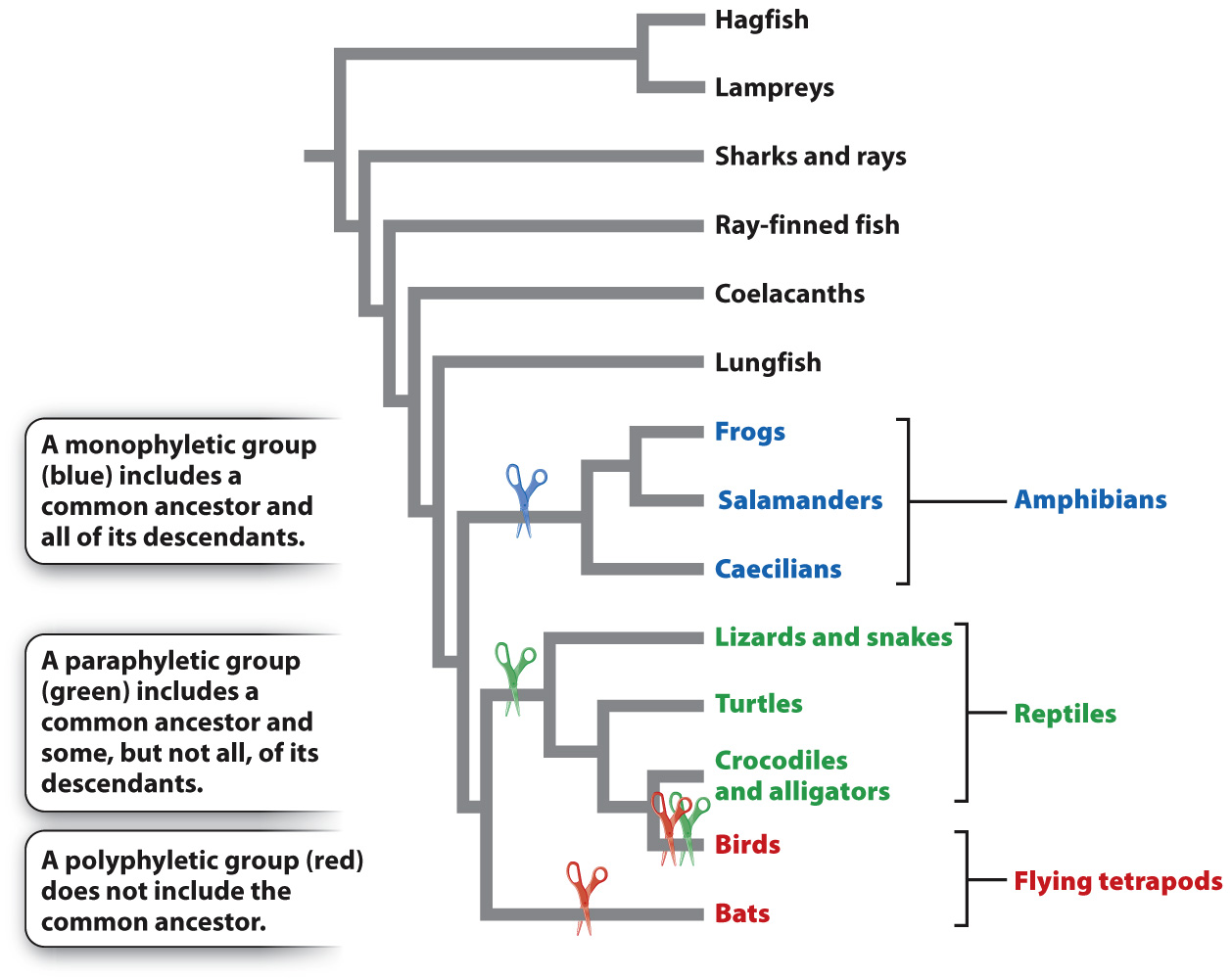A monophyletic group consists of a common ancestor and all its descendants.
Up to this point, we have used the word “group” to mean all the species in some taxonomic entity under discussion. A more technical word is taxon (plural, taxa), with taxonomy providing a formal means of naming groups. Recently, biologists have worked to integrate evolutionary history with taxonomic classification. The resulting classification emphasizes groups that are monophyletic, meaning that all members share a single common ancestor not shared with any other species or group of species. In Fig. 23.2, the tetrapods are monophyletic because they all share a common ancestor not shared by any other taxa. Similarly, amphibians are monophyletic.
In contrast, consider the group of animals traditionally recognized as reptiles, which includes turtles, snakes, lizards, crocodiles, and alligators (Fig. 23.2). The group “reptiles” excludes birds, although they share a common ancestor with the included animals. Such a group is paraphyletic. A paraphyletic group includes some, but not all, of the descendants of a common ancestor. Early zoologists separated birds from reptiles because they are so distinctive. However, many features of skeletal anatomy and DNA sequence strongly support the placement of birds as a sister group to the crocodiles and alligators.
There is a simple way to distinguish between monophyletic and paraphyletic groups, illustrated in Fig. 23.4. If in order to separate a group from the rest of the phylogenetic tree you need only to make one cut, the group is monophyletic. If you need a second cut to trim away part of the separated branch, the group is paraphyletic.

Groupings that do not include the last common ancestor of all members are called polyphyletic. For example, clustering bats and birds together as flying tetrapods results in a polyphyletic group (Fig. 23.4).
Identifying monophyletic groups is a main goal of phylogenetics because monophyletic groups include all descendants of a common ancestor and only the descendants of that common ancestor. This means that monophyletic groups alone show the evolutionary path a given group has taken since its origin. Omitting some members of a group, as in the case of reptiles and other paraphyletic groups, can provide a misleading sense of evolutionary history. By using monophyletic groups in taxonomic classification, we effectively convey our knowledge of their evolutionary history.
Quick Check 2 Look at Fig. 23.4. Are fish a monophyletic group?
Quick Check 2 Answer
A group called “fish” is paraphyletic because it includes some, but not all, of the descendants of a common ancestor. The descendants of the common ancestor of fish also include amphibians, sauropsids, and mammals.